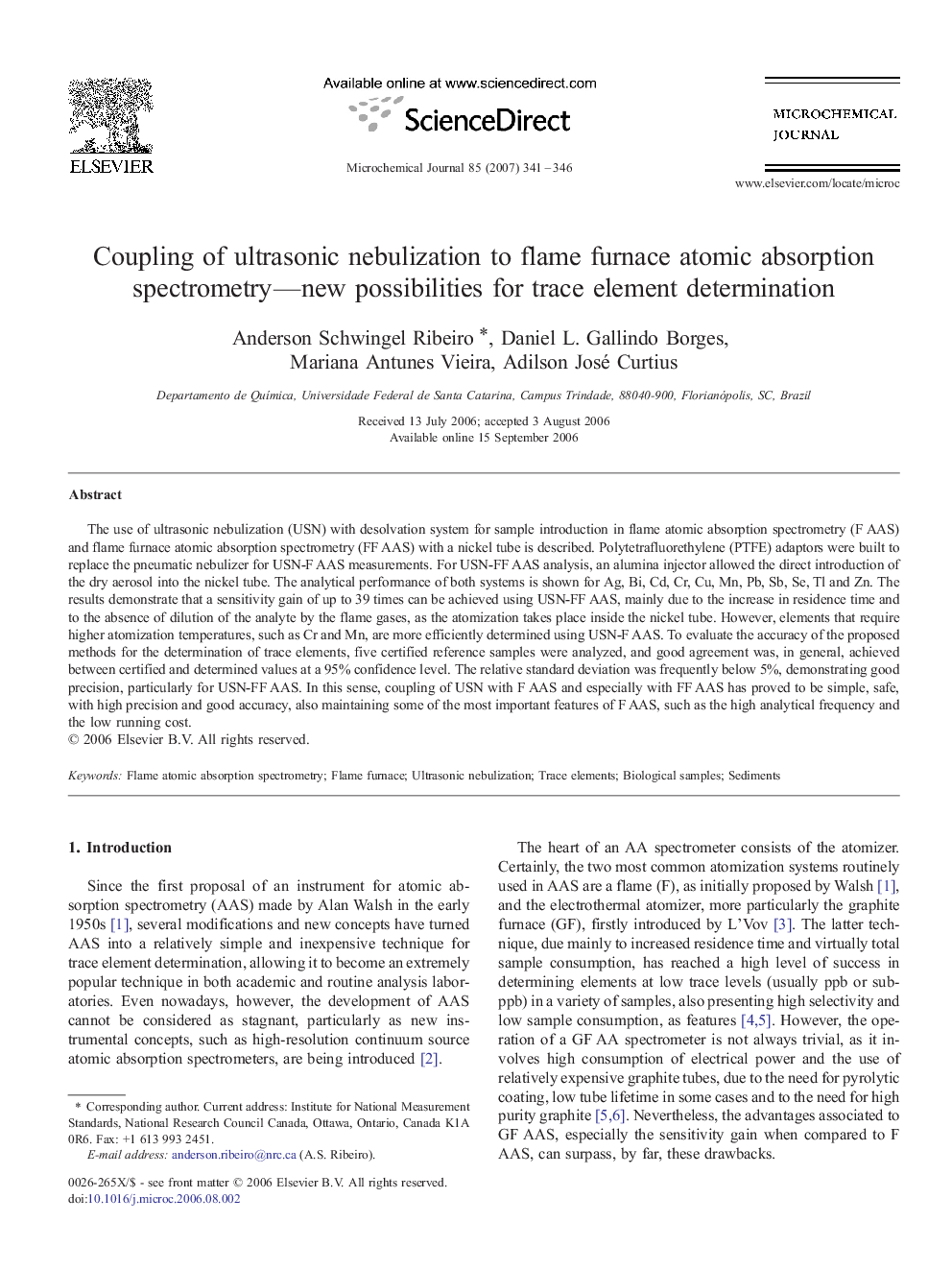| Article ID | Journal | Published Year | Pages | File Type |
|---|---|---|---|---|
| 1228468 | Microchemical Journal | 2007 | 6 Pages |
Abstract
The use of ultrasonic nebulization (USN) with desolvation system for sample introduction in flame atomic absorption spectrometry (F AAS) and flame furnace atomic absorption spectrometry (FF AAS) with a nickel tube is described. Polytetrafluorethylene (PTFE) adaptors were built to replace the pneumatic nebulizer for USN-F AAS measurements. For USN-FF AAS analysis, an alumina injector allowed the direct introduction of the dry aerosol into the nickel tube. The analytical performance of both systems is shown for Ag, Bi, Cd, Cr, Cu, Mn, Pb, Sb, Se, Tl and Zn. The results demonstrate that a sensitivity gain of up to 39 times can be achieved using USN-FF AAS, mainly due to the increase in residence time and to the absence of dilution of the analyte by the flame gases, as the atomization takes place inside the nickel tube. However, elements that require higher atomization temperatures, such as Cr and Mn, are more efficiently determined using USN-F AAS. To evaluate the accuracy of the proposed methods for the determination of trace elements, five certified reference samples were analyzed, and good agreement was, in general, achieved between certified and determined values at a 95% confidence level. The relative standard deviation was frequently below 5%, demonstrating good precision, particularly for USN-FF AAS. In this sense, coupling of USN with F AAS and especially with FF AAS has proved to be simple, safe, with high precision and good accuracy, also maintaining some of the most important features of F AAS, such as the high analytical frequency and the low running cost.
Keywords
Related Topics
Physical Sciences and Engineering
Chemistry
Analytical Chemistry
Authors
Anderson Schwingel Ribeiro, Daniel L. Gallindo Borges, Mariana Antunes Vieira, Adilson José Curtius,
